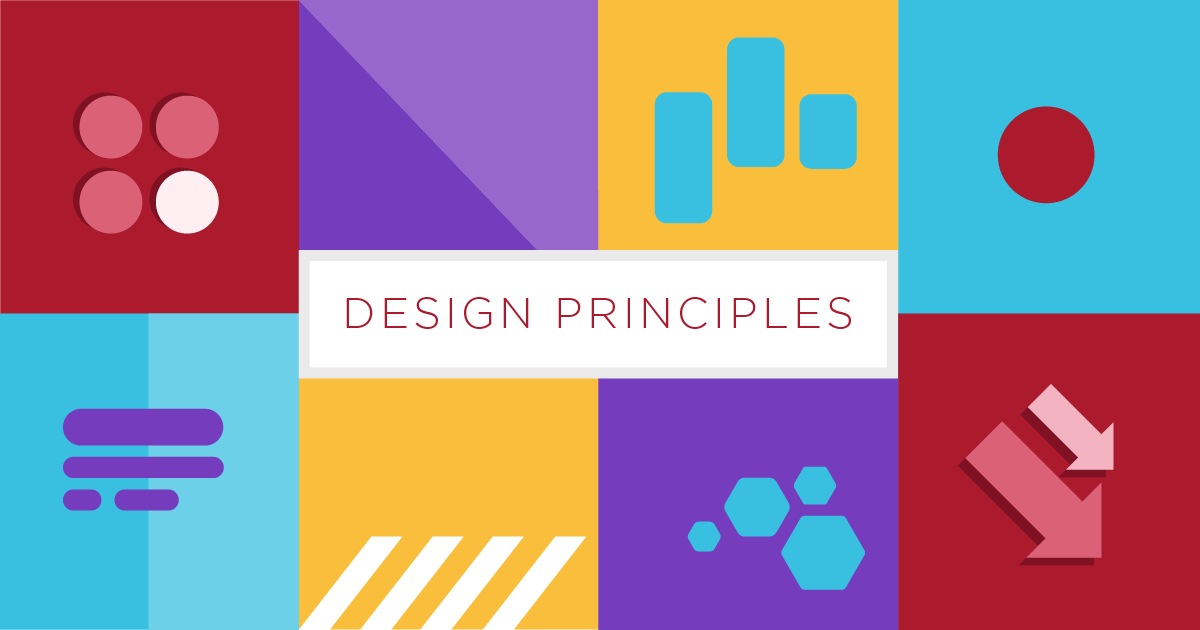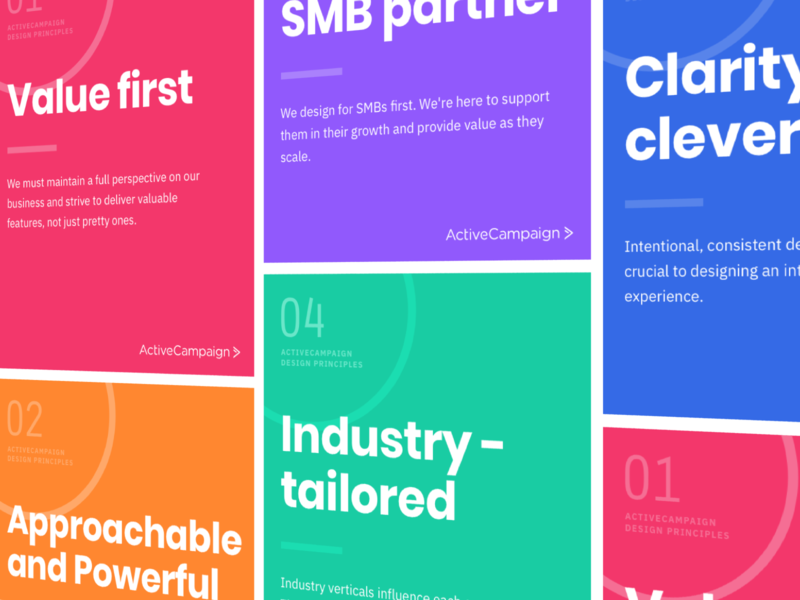There’s a lot of buzz about Design Principles.
From Silicon Valley startups to multi-national conglomerates like IBM, Design Principles are gaining traction.
And now everybody wants them… but they’re not sure why.

I’ll provide my insight as to why they’re extremely powerful for leading teams, building products, etc…
What are Design Principles
Design Principles are first principles that serve as the design foundation for a project in the form of design recommendations that guide each design decision your design team makes as they’re working on a design project – providing the necessary focus to create a kick*ss aesthetic and experience that’s consistent throughout the product that your users will absolutely love.
Important Note: We’re only focused on Design Principles in this post and not the elements of design. To clarify, the elements of design (e.g. lines, shapes, value, etc.) are what are used to create a composition, while Design Principles are guides on how to use the elements.
Design Principles are an extraordinary tool that I utilize on all of my design projects, because they really help designers go beyond the basics of product design (i.e. enhancing usability, increasing engagement, etc.) to mashup the business of design with your specific goals/needs/wants of your customers.
Design Principles are really the essence of design leadership.

They represent the accumulated wisdom of researchers and practitioners in design and related fields. And when they’re applied, they help you to rein in the madness of creativity by providing tangible design boundaries, and this in turn helps you to better predict how your customers will react to your design.
Types of Design Principles
There’s tons of various types of Design Principles, but I’d say the most important ones to consider are visibility, findability, and learnability that succinctly address basic human behaviors in their interactions with digital products.

Another type of Design Principles are those that specifically reference various design roles/functions on a project, e.g. User Experience (UX) Design, Interaction Design (IxD), etc.
I strongly caution against this approach unless you’re a highly experienced team, because it could potentially cause unnecessary competition between the experience design roles once a difficult design decision needs to be made and the Design Director has to essentially choose/prioritize between the different sets of Design Principles.
The approach I recommend is creating 5-15 Design Principles that encompass all areas of design on a design project, from user experience design to visual design to interaction design. The added benefit is that it will unify all of the experience design roles under a common design language.
When to Use Design Principles
As I mentioned in my post on Strategic Product Planning, I typically start new design projects by assisting the Product Manager in developing the Product Strategy, and then focusing on the UX Vision & Strategy. Once those are completed, I then set my sights on creating the Design Principles.
I’ve found that the best way to do this is by collaborating on the Design Principles with my design team. Sure, I’ll make the final decisions on them, but most of the time the team aligns quickly on the best ones. So it’s a great way to build trust and confidence with your team.
Once they’re created, I honestly refer to them at each step of the creative process on a project to make sure we were staying on track. When I didn’t use them in the past, it often felt like my feedback as a Design/Creative Director to my team seemed subjective, and even unfair at times because they obviously couldn’t read my mind.
Key Benefits of Utilizing Design Principles
The main reason I love using Design Principles is because it always turns projects into seamless collaborations between Design leadership and the design team vs what I call a “Design Dictator” who just barks orders at their team.
Nobody likes that guy. So don’t be that guy.

On the flipside, I love them because it makes the job for Design/Creative Directors really really easy, mainly because you no longer have to boil the ocean of design possibilities in order to fulfill your client’s goal of designing “the best web/mobile/digital experience of all time!”
And it quickly turns difficult decisions into easy ones when you’re in the trenches working on a design project.
Clients are happy. Design team is happy. And I’m happy.
Bust out the happy dance!




4 thoughts on “Design Principles are the Critical Factor to Better Product Decisions”